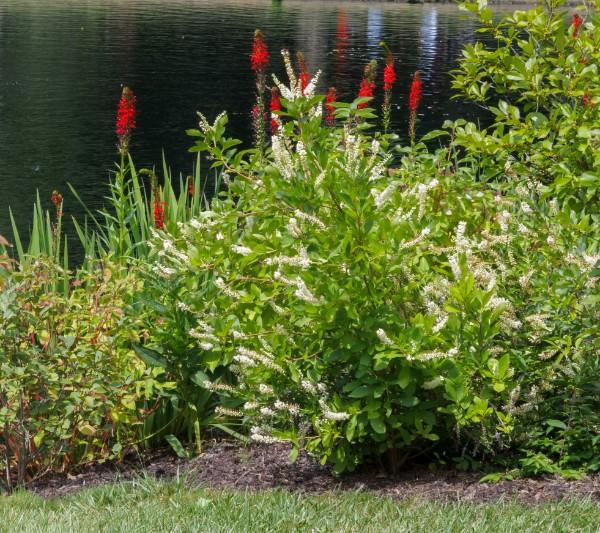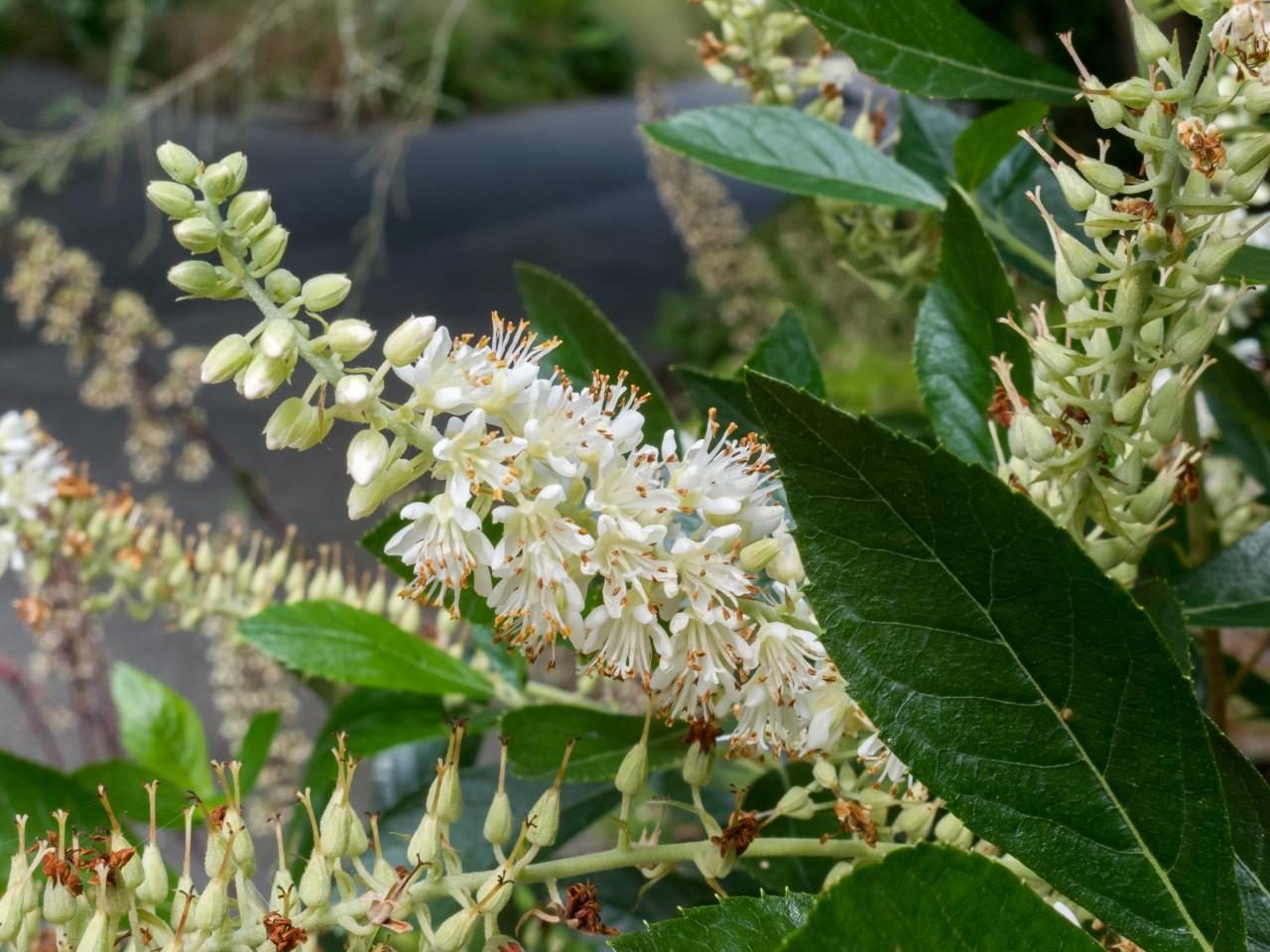Growing summersweet
Clethra alnifolia
Deciduous shrub
Maryland Distribution: Coastal Plain
Height: 6-12’ (dwarf cultivars are 2-4’)
Flowers: showy white or pink flowers in July-August
Fall color: yellow
Sun: full sun to shade
Soil: moist to wet soil; pH 4.5-6.5
Garden Uses: Summersweet (Clethra alnifolia), also called sweet pepperbush, is a Maryland native plant found in forested wetlands, floodplains, and swamps. Spikes of highly fragrant flowers bloom on the current season’s woody stems in mid-summer. The seed capsules turn brown and persist on the plant in fall and winter. The foliage turns golden yellow in autumn.
This plant is adaptable to all soil textures (sand, silt, clay) and tolerates periodic flooding, even by partly salty (brackish) water. It spreads by suckers, meaning new stems arise from the root system.

Summersweet is ideal for a rain garden, pollinator garden, fragrance garden, privacy screen, or shrub border. It also can be used for erosion control on slopes, or near a pond or downspout. Grows in similar conditions favored by winterberry holly and Virginia sweetspire.
Cultivated varieties vary in size. Some grow to 5-8’ in height while dwarf cultivars mature in the 2-4’ range. Smaller forms of Clethra alnifolia include:
- Sugartina® ‘Crystalina’ - 3’ x 3’
- Summer Sparkler® (‘Novacleein’) - 3-4’ x 3-4’
- ‘Hummingbird’ - 2’-4’ x 3-5’
Wildlife: Summersweet is highly valuable to native wildlife. The flowers provide food for native bees, butterflies, and hummingbirds, and a variety of songbirds eat the seeds. It is a host plant for the Sweet Pepperbush Nola Moth.
This plant has few pest or disease problems and it is deer-resistant.

References
Dove, Tony and Ginger Woolridge. 2018. Essential Native Trees and Shrubs for the Eastern United States: The Guide to Creating a Sustainable Landscape, Charlesbridge, Watertown, MA.
Slattery, Britt E., et. al. 2005. Native Plants for Wildlife Habitat and Conservation Landscaping, U.S. Fish & Wildlife, Chesapeake Bay Field Office, Annapolis, MD. 82 pp.
Still have a question? Contact us at Ask Extension.
